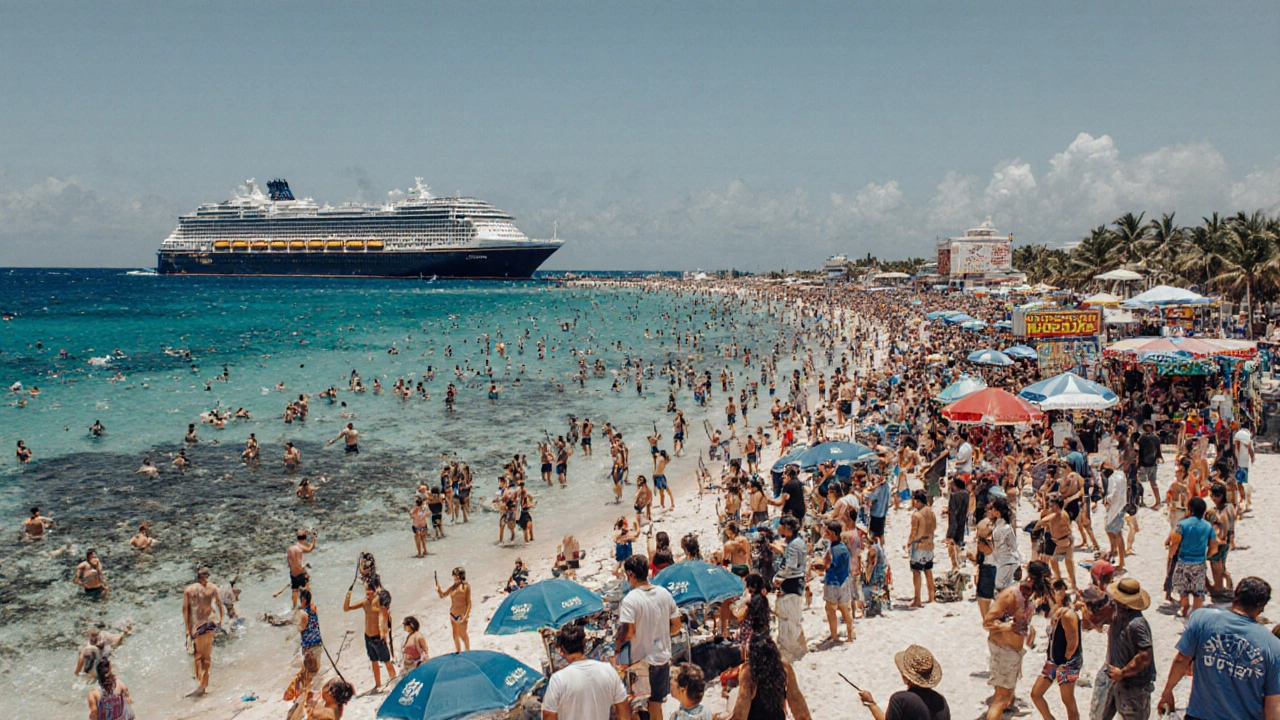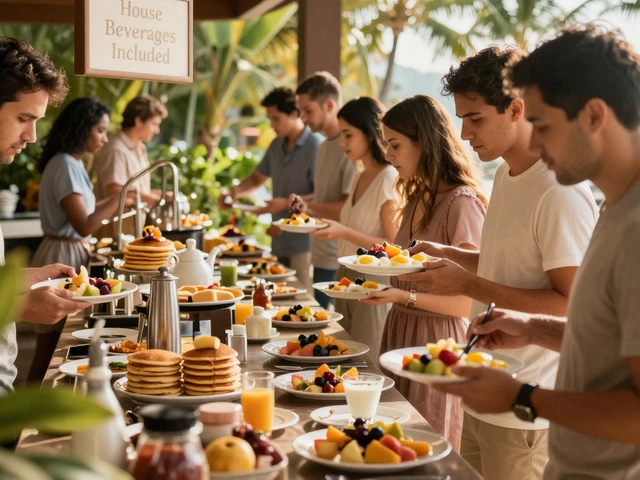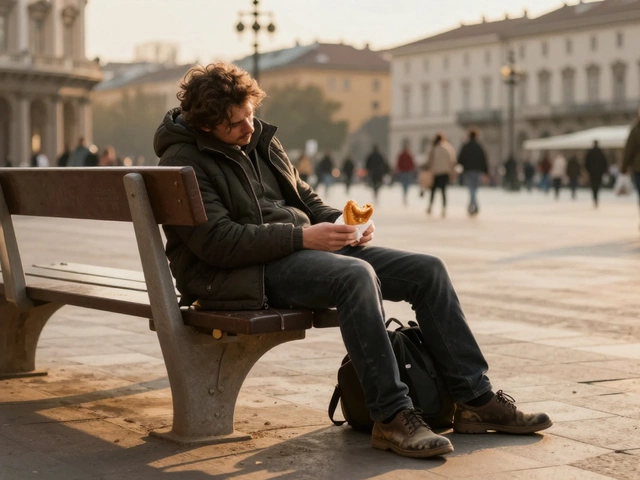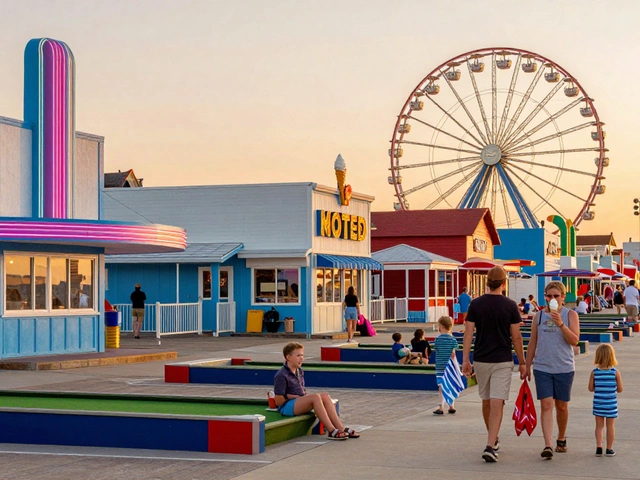Island Destination Assessment Tool
Assess Your Destination
Why This Matters
According to the article, destinations that score high in overcrowding, environmental damage, cultural erosion, and poor value indicate unsustainable tourism. These islands are often overcrowded, overpriced, and losing their authentic character.
Enter destination details and click 'Assess Destination' to see your results.
If you’re dreaming of white sand, turquoise water, and quiet sunsets, you’re not alone. But not every island delivers on that promise-and some turn your dream vacation into a headache you can’t escape. In 2025, certain islands have become so crowded, overpriced, or environmentally damaged that even the most patient traveler should think twice before booking. This isn’t about FOMO. It’s about saving your time, money, and sanity.
Cozumel, Mexico: The Cruise Ship Graveyard
Cozumel used to be a gem. Clear water, coral reefs, quiet coves. Now? You’ll step off the cruise ship into a sea of selfie sticks and taco stands selling $12 margaritas. On peak days, over 10,000 tourists flood the island at once. The main beach, Playa San Francisco, is packed shoulder-to-shoulder by 9 a.m. Snorkeling spots are stripped bare from too many visitors. Local divers say coral cover has dropped 60% since 2018. And don’t expect to find peace-every path leads back to the same three souvenir shops, all selling the same $5 ‘handmade’ keychains. You’re not on an island getaway. You’re in a floating mall with ocean views.
Phuket, Thailand: Luxury That Costs More Than It’s Worth
Phuket’s reputation for luxury has turned it into a price trap. A simple beachside lunch now costs $30. A 10-minute taxi ride? $25. The beaches? Crowded. The water? Often murky from runoff and boat traffic. Patong Beach is a nonstop party zone with neon signs, loud music, and touts offering ‘discounted’ spa deals that lead to high-pressure sales pitches. Even the quieter beaches like Kata and Karon are packed during high season. The real problem? The island’s infrastructure can’t handle it. Power outages happen daily in July and August. Plastic waste washes up on shores that used to be pristine. You pay premium prices for a beach that doesn’t feel like a beach anymore.
Bali, Indonesia: The Overloaded Paradise
Bali’s magic isn’t gone-but it’s buried under traffic, scams, and cultural erosion. Ubud’s rice terraces are now photo ops with $5 entry fees and lines of 50 people waiting to take the same shot. The famous Monkey Forest? A zoo with aggressive monkeys stealing phones and sunglasses. The beaches? Uluwatu and Seminyak are packed with influencers and yoga retreats charging $200 a night for a room with a view of a trash-strewn shore. Water quality in Canggu is so poor that locals avoid swimming. And the real kicker? Most of the resorts and restaurants are owned by foreign investors. The money doesn’t stay on the island. You’re not supporting local culture-you’re funding a tourist industrial complex.
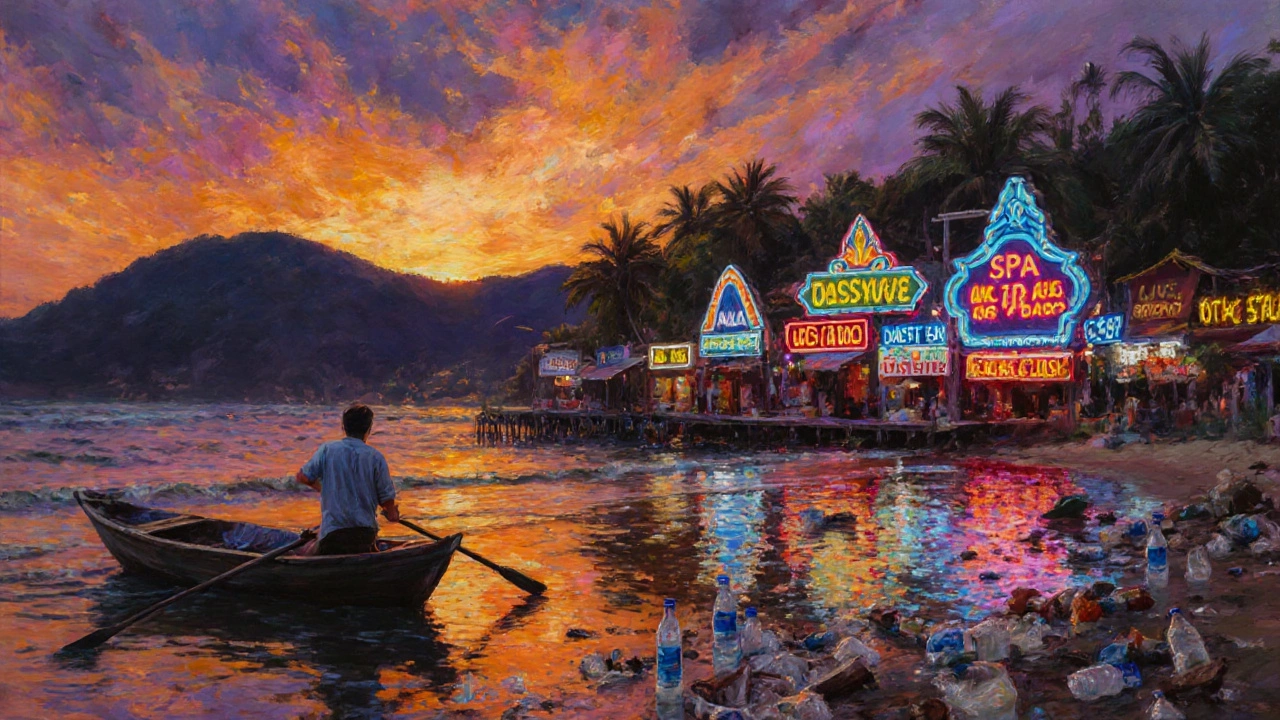
Mykonos, Greece: Party Island, No Soul
Mykonos used to be a quiet fishing village with whitewashed houses and windmills. Now? It’s a nightclub with a beach. The island’s population swells from 10,000 to over 200,000 in July and August. Beach clubs charge $150 just to sit on a lounger. The water is churning with jet skis and speedboats. You can’t walk 100 meters without someone trying to sell you a cocktail or a ‘limited edition’ Mykonos T-shirt. The real charm-the narrow alleys, the local bakeries, the quiet coves-is now reserved for those who can afford €1,000-a-night villas. Most visitors never see it. And the locals? They’re leaving. Housing prices have tripled since 2019. What’s left feels like a theme park designed for Instagram.
Barbados: The High-Cost, Low-Experience Trap
Barbados is expensive-and not just because of the exchange rate. A simple seafood platter at a beach shack? $45. A day pass to a private beach club? $120. The beaches themselves? Beautiful, yes-but often guarded by private resorts that charge $30 just to use their towels. The north coast, once known for wild, untouched shores, is now lined with all-inclusive resorts that look like giant concrete hotels. And the food? Overpriced and generic. You’ll find more American-style burgers than local flying fish curry. The island’s culture is being sold in gift shops. You’ll pay top dollar for a ‘Bajan experience’ that feels more like a corporate package deal than a real connection to the place.
What Makes These Islands Bad Choices?
These places don’t fail because they’re ugly. They fail because they’ve lost their soul. Here’s what they all have in common:
- Overcrowding: Too many tourists, too few resources. Beaches become parking lots.
- Price inflation: Local prices rise to match tourist spending, not local income.
- Environmental damage: Coral reefs dying, plastic choking shores, water shortages.
- Cultural erosion: Traditions turned into performances for cameras.
- False promises: Marketing shows paradise. Reality shows lines, fees, and exhaustion.
It’s not that these places are ‘bad.’ It’s that they’ve become unsustainable. You’re not just paying for a vacation-you’re paying to contribute to their collapse.
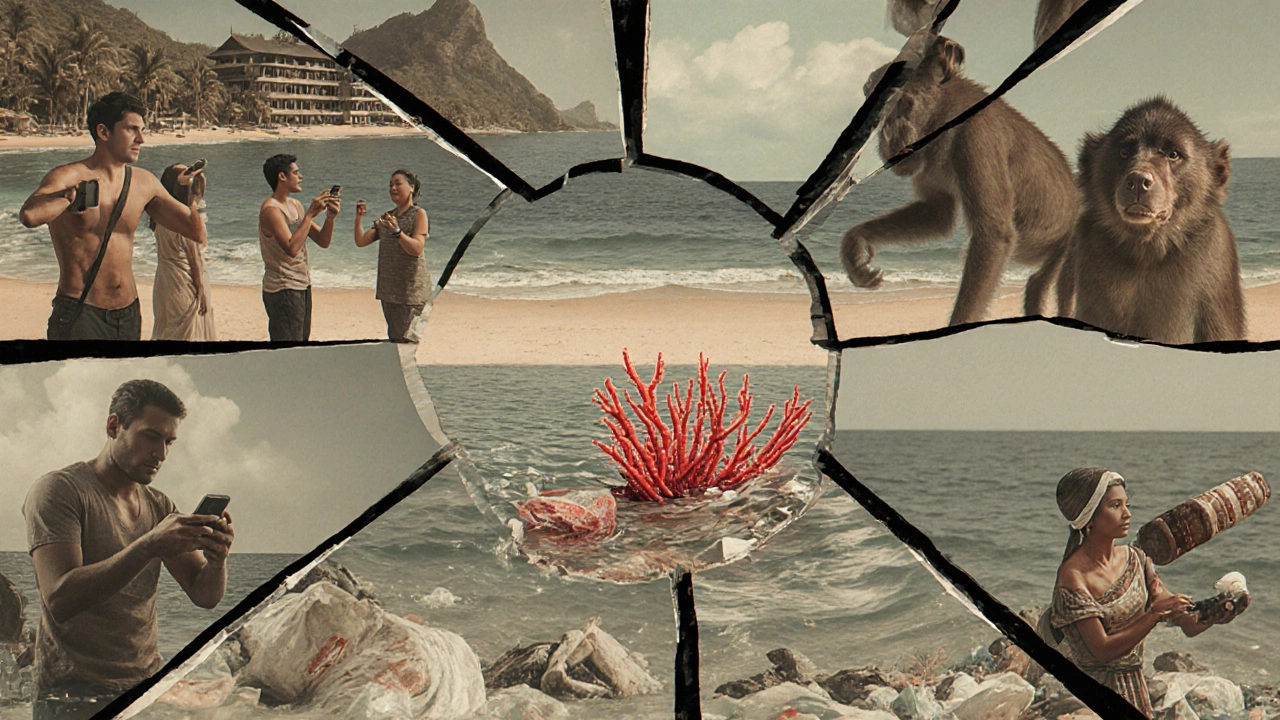
Where to Go Instead
If you’re avoiding these islands, where should you go? Look for places that limit visitors, protect nature, and keep prices fair.
- Faroe Islands: Tiny population, wild landscapes, no cruise ships. You’ll need to plan ahead, but you’ll have the cliffs to yourself.
- Madagascar: Not a typical beach spot, but its coastal islands like Nosy Be offer quiet coves, coral reefs, and real local culture.
- Palawan, Philippines: El Nido and Coron still feel untouched. Tourist caps keep crowds down. The water? Crystal clear.
- Azores, Portugal: Volcanic beaches, hot springs, and a slow pace. No party crowds. Just ocean, mist, and quiet.
- Samoa: Authentic Polynesian culture. No all-inclusives. Just family-run guesthouses and empty beaches.
These places don’t have Instagram hashtags. But they have something better-realness.
How to Spot a Dying Destination Before You Book
You don’t need to read a thousand reviews. Here’s how to tell if a place is heading downhill:
- Check Google Maps Street View. If you see lines of tour buses parked at every beach, walk away.
- Look at recent photos from locals on Instagram or Reddit-not travel blogs. Real people post about trash, noise, and broken infrastructure.
- Search for ‘[island name] + over-tourism’ or ‘[island name] + environmental crisis.’ If news articles pop up, it’s a red flag.
- Ask: ‘Who owns the hotels?’ If most are owned by international chains, the profits aren’t staying local.
- Check if the island has a daily visitor cap. If not, it’s probably already overwhelmed.
Don’t fall for the ‘last chance to see it before it’s gone’ hype. That’s a sales tactic. If a place is already broken, you won’t be saving it by visiting. You’ll just be adding to the problem.
Final Thought: Travel Is a Choice, Not a Duty
You don’t have to go everywhere. You don’t have to check off every ‘must-see’ island. The best vacations aren’t the ones with the most photos. They’re the ones where you feel calm, connected, and respected-by the place and the people. Skip the islands that are drowning in tourists. Find the ones still breathing. Your trip-and the planet-will thank you.
What is the most overrated island to visit in 2025?
Cozumel is the most overrated in 2025. With over 10,000 cruise passengers landing daily, the beaches are packed, the coral is dying, and the local economy is dominated by cheap souvenirs and overpriced food. What was once a diving paradise is now a tourist conveyor belt.
Why is Bali considered a bad beach destination now?
Bali’s beaches are overcrowded, water quality has dropped due to pollution, and the island’s culture is being commercialized. Popular spots like Uluwatu and Seminyak are filled with resorts and influencers, while locals struggle with rising costs and housing shortages. The real experience is hidden behind paid entry fees and tourist traps.
Are there any islands that are still quiet and uncrowded?
Yes. The Faroe Islands, Samoa, and parts of Palawan in the Philippines still offer quiet beaches and authentic experiences. These places limit tourism, protect nature, and keep prices fair. You won’t find crowds or luxury resorts-but you’ll find real peace.
How can I avoid visiting a damaged island?
Search for ‘[island name] + over-tourism’ or ‘[island name] + environmental crisis’ in recent news. Check Google Street View for bus lines and crowds. Look at local photos-not travel ads. If hotels are owned by foreign chains and locals are leaving, it’s a warning sign.
Is it better to avoid beaches entirely?
No. But be selective. Focus on islands with visitor caps, local ownership, and strong environmental policies. Quiet beaches still exist-they’re just not the ones plastered on Instagram. Seek out places where tourism supports the community, not just the brand.

